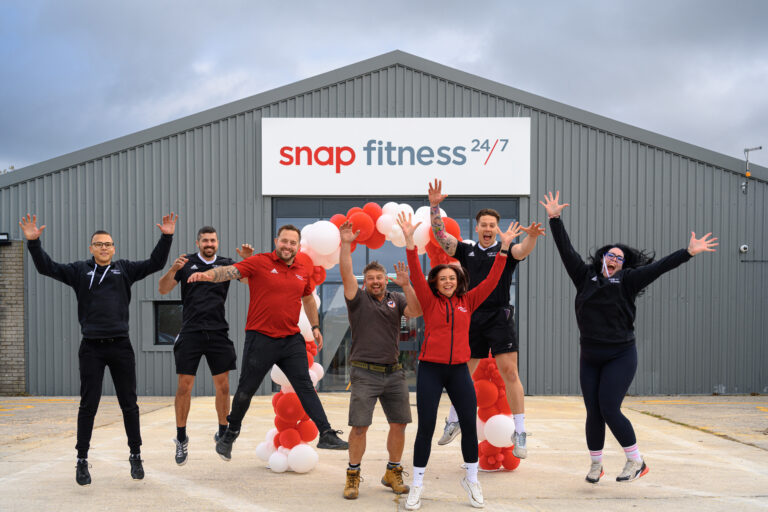Expanding your business empire? A gym brand is your next step say franchise Snap fitness
Bill Painter, Director of Development at Snap Fitness 24/7 on diversifying with a fitness franchise
When expanding their business portfolios many investors turn to franchising for key reasons including a tried and tested model with proven returns, strong brand recognition and established support infrastructure. But how do you determine which industry? Franchising within the fitness industry is a strong option right now and here’s why:

Firstly, we must consider the market context; We’ve heard a lot about how Covid has changed the consumer spending landscape. There is no denying that businesses and investors have been on a rollercoaster.
Many industries have been bouncing back, even exceeding pre-Covid levels and have reaped the rewards of a shift in consumer behaviours. There are now extra factors to consider as we start to feel the layered impact of Brexit on both the supply chain and staff recruitment.
Businesses with a simple, flexible and easily available product such as fitness are likely to thrive. Consumers require a service that fit with their new work-life balance.
Furthermore, more people than ever are focused on their health and wellness – it’s a great time to explore the opportunities that are available.
The right product
The way people work has changed and is likely to remain. Whilst some prefer the traditional routine of five days a week, 9-5 in the office, many are enjoying the increased flexibility – working out needs to fit with the new schedule.
24/7, multi-site access to gyms in easily accessible locations has never been more important. Bricks and mortar fitness businesses must have a clear methodology in place to address this need and deliver the right level of service to its members.
It is equally important for them to ensure that their brand and vision align to the general population, not just to traditional fitness enthusiasts. Historically gyms have been intimidating places for many; the work harder/push harder mentality, all in the pursuit of arguably unattainable goals has put some people off.
There’s a new tranche of people now exploring and joining gyms – they should be genuinely supportive places that help every member achieve their goals in their own way.
The staffing model
Recruiting and retaining the right people for multiple shift patterns is one of the biggest challenges in the services industry. In September, UK job vacancies hit a record high of 1.2m – there is lots of competition for great people right now.
If you have the correct staffing and access model for a gym you don’t need a big team to manage your day-to-day operations, even if open 24/7. At, Snap Fitness we require the gym to be staffed during the times our members need us most and have a model of key hours to ensure maximum service from a comparatively lean staffing model.
Given the high energy, high reward environment that we create it’s our experience that our staff stay longer than in other front line service roles – they are personally motivated by the face-to-face contact and helping people on their fitness journey. Happy, motivated staff translates into happy members that keep coming back.

The supply chain
Businesses that are reliant on the supply chain are experiencing challenges right now, we’re seeing dishes dropped from menus and supermarket shelves less full than before. The shortage in supplies will inevitably pass, but even in pre-Covid / Brexit times there were so many variables that can impact the supply of ingredients or components that make up the service offering.
The basic platform of the gym model is the physical site and the equipment. The best operators use their team, network and strong engagement plans to create a service level that consumers keep coming back to, however, in fitness there is not a basic reliance on a convoluted supply chain of variable costs to deliver the service.
Once the gym is open the ongoing success will depend on internal factors within the operational control – marketing, the team, a well-maintained environment and engaging class timetables.
A simple P&L
It’s well known that there are peak times and seasonality across the fitness year. We have all probably been guilty of a January resolution dropping off! At Snap Fitness we believe that shifting the narrative to being more inclusive is vital in changing these tendencies.
With the introduction of some exciting new retention tools in 2021, we aim to create lifestyle habits that last and increase the membership engagement and duration of our customers.
The physical size of the gym can also have a bearing on the user experience. Our sweet spot tends to lean towards smaller, more welcoming spaces. We find that gyms with a smaller membership base are more stable. Our members appreciate the value of a premium fit out and service and are less likely to have their heads turned by a large, budget operator.
Investors enjoy that there are only a couple of Key Performance Indicators when it comes to the success of the Snap Fitness P&L. There will naturally be a few dials to turn along the way however the key revenue number is a simple of product of how many members you have and what they pay.
When this ability to create subscription-based revenue combines with some strong property availability it becomes easy to understand the tailwinds that the industry is looking forward to.
Driven by a new and energised consumer market we are uniquely positioned for a long and forecastable period of growth.
Bill Painter, is the EMEA Development Director for Snap Fitness 24/7. Snap Fitness 24/7 is a leading fitness franchise with 1000+ clubs in 20+ countries




